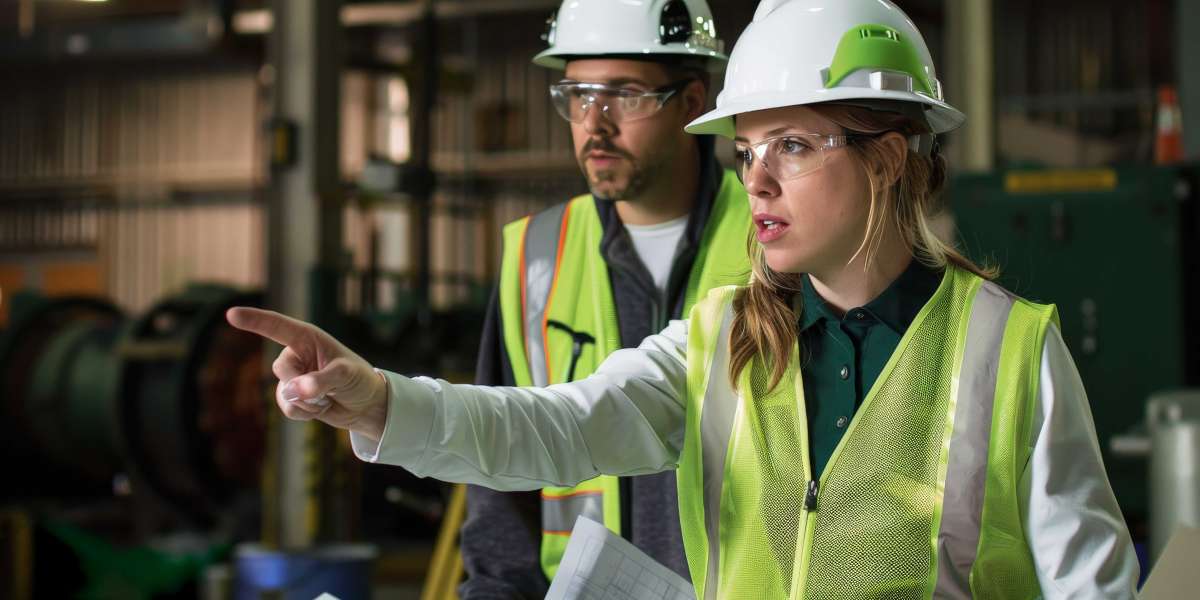Hot work operations—like welding, cutting, grinding, and brazing—are some of the most hazardous activities carried out at any industrial site. When not properly managed, they can lead to fires, explosions, serious injuries, or even fatalities. That’s why developing strong procedural controls for hot work is not just a good practice—it’s a critical safety requirement.
Let’s now walk through a step-by-step guide that will help you create and implement strong procedural controls for hot work operations, in simple and practical language.
Why Procedural Controls Matter in Hot Work
Procedural controls act like a safety net. They are written instructions, permits, and checks that reduce the chances of something going wrong. These controls make sure that everyone—from the welder to the supervisor—follows the same safety rules, every time.
In Pakistan, industries are paying more attention to workplace safety, especially when it comes to high-risk tasks like hot work. Many professionals enroll in safety training programs such as the NEBOSH course to understand how to prevent such hazards. Understanding the NEBOSH course fees helps new safety officers and aspiring safety professionals plan their career path and get certified to manage such high-risk activities effectively.
Step 1: Understand the Hazards of Hot Work
Before you create controls, you need to understand the risks. Hot work operations involve open flames or sparks that can easily ignite flammable substances. Risks include:
- Fire and explosion
- Burns and injuries
- Toxic fumes
- Damage to nearby equipment or materials
Tip: Walk around the work area before hot work begins. Look for anything flammable—like oil, chemicals, paper, or dust—and list down the hazards.
Step 2: Create a Hot Work Permit System
A Hot Work Permit System is the first and most important control. It acts like a checklist and approval system to ensure safety precautions are taken.
What Should Be Included in the Permit?
- Description of the hot work to be done
- Exact location of the work
- Hazards identified in the area
- Who is performing the work
- Name of the firewatcher
- Time and duration
- Approvals required (supervisor, safety officer)
The permit should be issued each time hot work is done—not just once a week or once a project.
Step 3: Assign a Firewatcher
A fire watcher is someone trained to observe the hot work and respond if anything goes wrong. Their job is to:
- Keep a lookout for fire or smoke
- Use fire extinguishers if needed
- Ensure no sparks fly into unwanted areas
- Stay at the site for at least 30 minutes after the work ends
In many cases, a firewatcher has saved entire buildings from burning down just by reacting quickly to a tiny spark.
Step 4: Train Your Workers and Supervisors
Training is where most companies fail. You can have great procedures written on paper, but if your team doesn’t understand them, they’re useless.
What Training Should Cover:
- Dangers of hot work
- Permit-to-work process
- How to use fire extinguishers
- How to respond to emergencies
- Using PPE (gloves, goggles, fire-resistant clothing)
It’s wise to train everyone—not just welders but also supervisors and nearby staff. And this is where professional courses like NEBOSH play a key role.
Step 5: Control the Work Environment
You need to prepare the area before hot work begins. This includes:
- Removing flammable items or covering them with fire blankets
- Ventilating the space to avoid toxic fumes
- Checking for gas leaks
- Ensuring fire extinguishers are ready
- Marking off the area to keep unauthorized people out
Case in Point: In one Karachi shipyard, a simple cover over oil drums would’ve prevented a massive fire. Never assume the space is safe without checking.
Step 6: Monitor During the Work
Once hot work starts, don’t walk away. Assign a safety supervisor or foreman to:
- Monitor weather if the work is outdoors
- Check the equipment regularly
- Ensure the team is following procedures
- Keep emergency contacts ready
Monitoring should continue throughout the task. If something seems off—like a smell of gas, unusual heat, or sparks flying too far—stop the work immediately.
Step 7: Inspect After the Work Is Done
This is the step most people ignore. After hot work ends, do the following:
- Have the firewatcher stay for 30 minutes
- Inspect the area for hidden embers or sparks
- Check nearby materials for heat
- Sign off the permit only when everything is cool and safe
Post-work inspection has prevented hundreds of fires. It's a simple act with a big impact.
Step 8: Record, Audit, and Improve
Once the hot work is done, document everything:
- Who did the work
- What controls were used
- Any incidents or near misses
- Lessons learned
- This helps you improve your procedural controls over time and train new employees using real examples.
Common Mistakes to Avoid
- Skipping the permit “just this once”
- Assuming the area is safe
- No firewatcher
- Poor communication between teams
- Not training contract workers
Every mistake listed above has caused at least one workplace fire somewhere in the world. Don’t let your site be the next one.
Benefits of Strong Procedural Controls
- Reduced fire and injury risk
- Higher confidence among employees
- Compliance with workplace safety laws
- Less downtime and damage
- Improved safety culture
Strong procedures protect both people and business. They also help avoid penalties and insurance problems.
Read more about NEBOSH Fee in Pakistan to explore how this course can upgrade your safety skills and support compliance in hot work environments.
Final Thoughts
Developing and applying strong procedural controls for hot work operations is not optional—it’s essential. By understanding hazards, creating permit systems, training workers, and auditing your process, you can prevent devastating accidents and protect lives.
Remember, every fire prevented is a life potentially saved. Start building your system today. And if you're serious about workplace safety, consider professional training—it could be the difference between risk and resilience.



